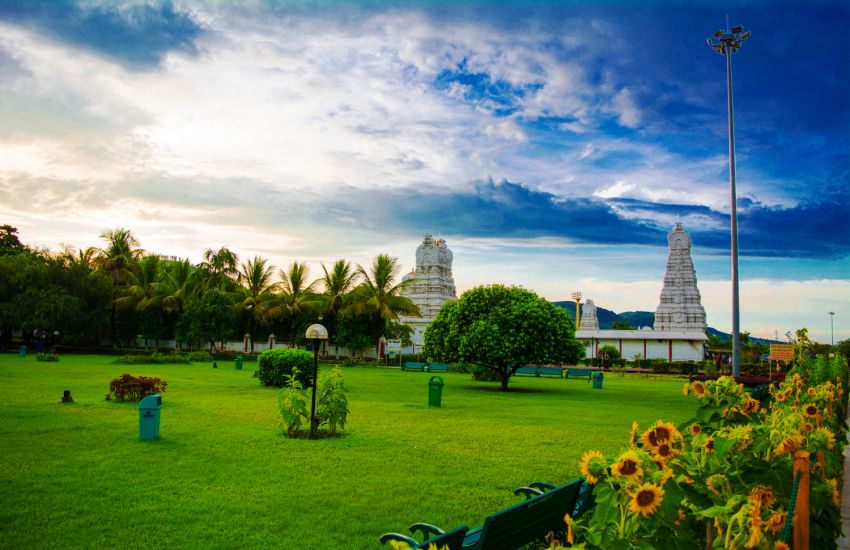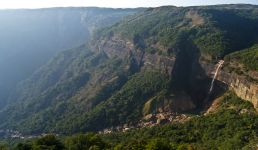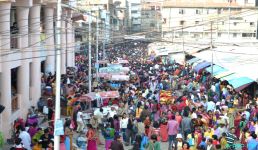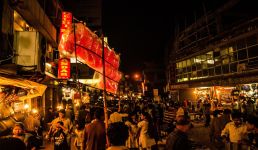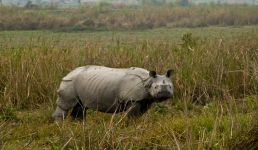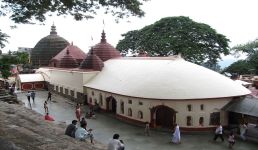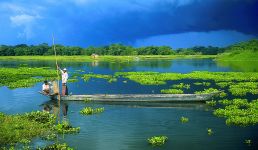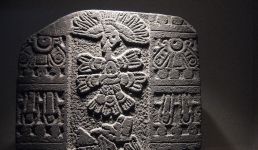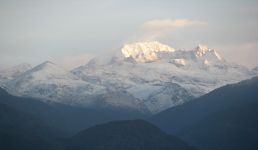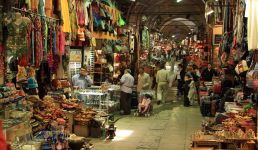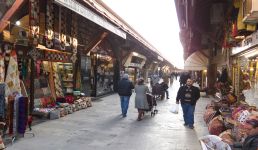Information about 'Goechala'
The trek is suitable for all levels of trekkers and promises an unforgettable experience that one will cherish for a lifetime. So, if one is looking for an adventure-packed journey through some of the most beautiful places in India, the Goechala Trek is worth taking.
Where is Goechala located?
Goechala is located in the Indian state of Sikkim, close to the border with Nepal. It lies at an altitude of 4,950 m (16,240 ft) and can be reached by trekking from Yuksom, approximately 8 km away.
Goechala Trek Guide
- Carry enough water, food, and warm clothing for the cold weather at higher altitudes.
- Wear layers of clothes, including thermal innerwear and windcheater jackets.
- Carry trekking poles or staff for balance and support during steep climbs.
- Additionally, carrying basic first-aid supplies, such as bandages, plasters, antiseptics, etc., is highly recommended.
- Get plenty of rest before embarking on the journey, and follow all safety instructions.
Places to visit in 'Goechala'
One of the most popular places to visit on the Goechala trek is Yuksom, located at an altitude of 1780m, which serves as the starting point for the trek. Yuksom is known for its majestic views of snow-clad mountains and lush green valleys. Other major attractions in this region are Sachen (3000m), Tshoka (3100m), and Phedang (3500m). These destinations offer breathtaking views of Mt Kanchenjunga along with spectacular panoramic vistas of the Himalayas.
- Sachen: In terms of accommodations, Sachen has few developments and other services. You may reach Sachen by trekking from Yuksom via the lush meadows near the Rathong river. Sachen is located at a height of 2,195 metres and has a plethora of lovely log cottages. The cottages are lined along the pathways below the rushing waterfall that sings across the meadows.
- Yuksom: It is the starting point for the beautiful Kanchendzonga trekking path. It was the first capital of the Sikkim monarchy to cede control to Gangtok. Yuksom means "the gathering site of the three wise monks," the monks who picked Phuntsog Namgyal to be the first "Chogyal" monarch in 1642 AD. It is a famous tourist attraction for explorers and trekkers and is part of the Geyzing district. It is surrounded by many monasteries, as well as the former kingdom's crowning throne, which may still be seen here. Yuksom is surrounded by rich nature, with beautiful hills and lakes.
- Dzongri: It will provide you with an unrivalled perspective of Kanchenjunga, the world's third-highest mountain. There are several trekker huts in the area, and it is a popular trekker campground. Rhododendron flowers may be seen strewn over acres of meadows on the plank route going to Dzongri during the Goechala trek. The Dzongri Top viewpoint is 4,200 metres high, offering views of Kabru, Kanchenjunga and Pandim peaks adorned with Tibetan prayer flags.
- Tshoka: It is a little community with buildings floating on the brink of a valley that dips down on three sides. It is the region's sole flourishing community in the Kanchenjunga National Park. Tshoka's walking paths are adorned with overgrown shrubbery with mountainous grades and deep impenetrable woodlands.
- Thansing: It is a lovely valley at a spectacular height of 3,932 metres; the route to Thansing is filled with lush meadows at the foot of the Jopine hills. It is surrounded by chortens, or Buddhist temples, and is wonderfully framed by the Kanchenjunga Peaks and snow-capped Pandim. Thansing is a lovely meadow on the slopes of Mount Pandim.
Activities to do in 'Goechala'
Apart from regular trekking and hiking, Goechala is also known for its excellent camping opportunities. Several campsites along the route offer spacious areas to pitch tents and enjoy a night under the stars. Adventure lovers can embark on river rafting in the Teesta River, which flows nearby, or go rock climbing at various sites around Goechala.
Besides these activities, one can also explore the local markets of Sikkim and nearby towns to get an insight into their culture and lifestyle. In addition, one can indulge in bird watching or visit local monasteries for some spiritual rejuvenation. Here are some popular activities to do in Goechala trek
- At Bakhim, Be Enchanted By Nature's Beauty: Bakhim, surrounded by rich woods of orchids, rhododendron, magnolia and ferns, is nothing short of a paradise where trekkers may stop and enjoy the picturesque views. The breathtaking views of the hills, valleys and Prek Chu River are the icing on the cake!
- Connect With The Residents Of Yuksom: Yuksom, a lush green and pristine town in West Sikkim, is a must-see on the Goechala Trek. Apart from the natural beauty, what will surprise you is the welcoming attitude and kindness of the residents, who constantly welcome passers-by with smiles.
- Witness Early Morning Glory Tshoka: Tsokha is a little refugee community in Kanchenjunga National Park that provides an ideal overnight break for trekkers. It is located at a height of 3,400 metres. It is well-known for offering visitors the most beautiful views of the dawn above Mt. Pandim.
- Feed Your Soul With The Gorgeous Views From Dzongri Summit: The Dzongri Summit is the finest section of the Goechala trek because it enables trekkers to feed their hungry souls with dazzling vistas of the Himalayas and their breathtaking summits. The peak is situated at an elevation of 4,250 metres on top of a hill in the picturesque Himalayan Range.
- Spend The Night Beneath The Stars In Thangsing: Thangsing, with its wide meadows and a lovely small river, serves as a delightful overnight stop for trekkers. Apart from being a gorgeous stop, Thangsing is also a refuge for night photographers, who may camp here and snap breathtaking views of the Milky Way Galaxy above.
Highlights of 'Goechala Trek'
The Goechala trek is special due to its breathtaking view of the third highest mountain in the world, Mt Kanchenjunga (8586m) and other peaks like Jopuno (7494m), Kabru (7314m), Pandim (6691m) and Siniolchu (6887m). Several places around Goechala can be explored for their beauty and charm, such as Dzongri Valley, Green Lake, Samiti Lake, Thangu Valley, etc.
Perfect Weather for 'Goechala' Trek
The Goechala trek best time is during summer (May–June) when temperatures are comparatively warmer, and the environment is ideal for a long trek. During winter, the temperature drops significantly, and snowfall can make it difficult to continue the trek. Hence, planning the trip in advance and preparing accordingly is important.
Alternatively, the spring season (March–April) also provides pleasant weather conditions suitable for trekking. However, due to unpredictable rainfall at higher altitudes, one should carry appropriate rain gear and waterproof bags/backpacks to keep their belongings safe and dry.
Goechala temperature in Summer
The average temperature at Goechala pass during the summer season ranges from 10°C–15°C during day time and 0°C–5°C at night. Carrying warm clothing for higher altitudes is recommended as temperatures drop significantly.
Goechala temperature in Winter
The average temperature in Goechala Sikkim during the winter season ranges from 0°C–5°C during day time and -10°C to -15°C at night. Carrying warm clothing for higher altitudes is advisable as temperatures drop significantly.
Goechala temperature in Monsoon
The average temperature in Goechala during monsoon season remains around 10°C and can drop from 0°C to -5°C at night. It is advisable to carry warm clothing, waterproof bags, and other rain gear, as there can be unexpected showers along the trek.
Interesting facts about 'Goechala'
- Goechala is one of the most popular treks in India.
- The trail passes through three distinct vegetation zones and showcases a variety of flora and fauna.
- It takes about 8–10 days to complete the entire Goechala trek distance, depending on the trekker's speed.
- The Sikkim Goechala Trek is considered one of the most challenging treks in India due to its steep inclines and unpredictable weather conditions at higher altitudes.
Mythology related to 'Goechala'
It is believed that the famous saint Guru Padmasambhava, also known as Second Buddha, once descended from the sky at Goechala on a legendary tigress. Since then, the place has become sacred, and many devotees visit the region for enlightenment.
History of 'Goechala'
The Goechala trek was first opened to the public in 1979 by a famous French mountaineer, Pierre Noire. Since then, the trail has become popular amongst nature lovers and adventure seekers worldwide.
It was discovered by the British during their colonial rule in India and used as a route from Sikkim to Tibet. In recent years, Goechala has emerged as an adventure hub.
Goechala, which means 'Land of Snow', gets its name from the local language, Limbu.
How to reach
- Via Roadways: If you want to travel by road, you may reach Yuksom in 5 hours from Geyzing by using a private or shared jeep. This place may also be reached by bus. Since the roads to Yuksom are poorly illuminated, taking a morning bus from the train station or airport is preferable to taking a bus at night.
- Via Airways: If you want to fly to Yuksom, the nearest airport is Bagdogra Airport, which is 160 kilometres away. This airport gets flights from several significant Indian cities. When you arrive at this airport, you may simply book a cab or take a taxi to Yuksom.
- Via Railways: If you want to go by railway, you should know that New Jalpaiguri Train Station is your only alternative. Travelling by railway is a far more cost-effective way to go to Yuksom. This railhead links the country's main states. To go to Yuksom, use a private car or a cab from this station.
Where/ What to Eat in Goechala
Goechala is home to various quaint cafes and eateries that offer a variety of cuisines. One can find delicious local dishes like momos, thukpa, sel roti, and other Tibetan delicacies along the trek. There are also many restaurants offering Indian and continental dishes at reasonable prices.
For those looking for a quick bite, there are plenty of street food vendors offering snacks like samosas, pakoras, and sandwiches.
Information about the trek in 'Goechala'
The Goechala Trek begins from Darjeeling and takes you through some of the most picturesque landscapes in the Himalayan region. The trail passes through lush green forests, meadows, rhododendron trees, prayer flags, and beautiful streams. On the way, one will also come across various small villages where one can interact with the locals and learn about their culture.
The trek offers amazing views of the mighty Mt. Kanchenjunga and other famous peaks like Pandim, Kangchenjunga South, and Jannu. Trekkers can witness spectacular sunrises and sunsets along the trail. One can also explore a variety of exotic flora and fauna in the region.
Where to stay in 'Goechala'
Several campsites and lodges along the Goechala pass trek offer basic accommodation and food. Most places have basic amenities like warm beds, running water, bathrooms, dining halls, and a kitchen. It is advisable to carry your own camping gear if you plan to stay in a tent.
There are also many homestays for a unique experience of living with the local people.
For those looking for luxury accommodation, a few high-end resorts in the area offer an unforgettable stay.
Travel tips for 'Goechala'
- Make sure to carry rain gear as the region often has unpredictable weather.
- Wear comfortable shoes with good traction for the trek.
- Pack lightweight, warm, technical clothing to stay comfortable during the trek.
- Carry an extra pair of socks and change them regularly to avoid blisters.
- Outdoor activities require adequate sun protection, so carry a hat and sunscreen lotion.
- Stay hydrated on the trek by carrying adequate water supplies.
- Carry a first-aid kit with essentials like electrolytes, band-aids, antihistamines, and painkillers.
- Carry a Goechala trek map with the accurate Goechala trek route.
FAQs
-
What is the best time to trek Goechala?
The best time for the Goechala Trek is between March and June, when the weather is most pleasant, with mild temperatures and clear skies. October to February is also good for trekking, but it can be cold at night. July and August see heavy rainfall and should be avoided.
-
What is the difficulty level of the Goechala Trek?
The Goechala Trek is classified as a moderate to difficult trek due to its high altitude and steep climbs. However, it can be completed by anyone with sufficient fitness and determination.
-
What is included in the Goechala Trek package?
Most packages include transportation, accommodation, meals, and guides. Some also provide trekking equipment like tents, sleeping bags, and backpacks at an additional cost. Additionally, most packages also cover sightseeing tours of nearby attractions like Tiger Hill or Sandakphu.
-
Does one need any permits for the trek?
Yes, one will need a permit from the District Tourism office in Darjeeling to enter the Singalila National Park, where the Goechala Trek is located. The permit costs around INR 50 per person per day and can be obtained easily at the park entrance. Additionally, foreign nationals will also require an inner-line permit to stay in the region for more than 3 days.
-
Can we complete the Goechala trek solo?
Yes, you may do the Goecha La trek solo. Nonetheless, because of the trek's varied terrain and great difficulty, it is best done in a group.
-
Why should one go on the Goechala trek?
The Goechala Trek is a unique opportunity to explore the majestic mountains of Sikkim and get a glimpse of its unspoiled culture and landscapes. One will get to witness the stunning views of Mt. Kanchenjunga because of the Goechala trek altitude, experience diverse flora and fauna, trek through quaint villages, and discover ancient monasteries—all in one trip!
-
Is there cell phone reception on the trek?
Yes, there is cellular coverage available along most parts, but it is quite unreliable at times due to the Goechala trek height. Carry a satellite phone or an emergency walkie-talkie for communication in case of emergencies.
-
Does the temperature drop on the Goechala Trek? What should I do in this situation?
Yes, the temperature can dip below zero on the Goechala trek. The simplest method to deal with such a scenario is to bring good woollens and stable ankle-length shoes for the walk. They will provide sufficient safety in case the temperature drops dramatically.
-
Can a novice attempt the Goechala trek?
The Goechala trek is suitable for beginners. The journey is moderate to challenging and includes a variety of terrains. As a result, if you are a newbie, you must assure that you are free of any health issues. As the trek leads you to higher elevations, it is also advised that you engage in some physical activity such as running and jogging.
-
How far will the Goechala Pass Trek take you each day?
The total distance of the Goechala trek is 90 km. Adventure seekers often trek an average of 5-6 hours every day for around 9-10 days. This is maintained to offer a pleasant hiking experience.





